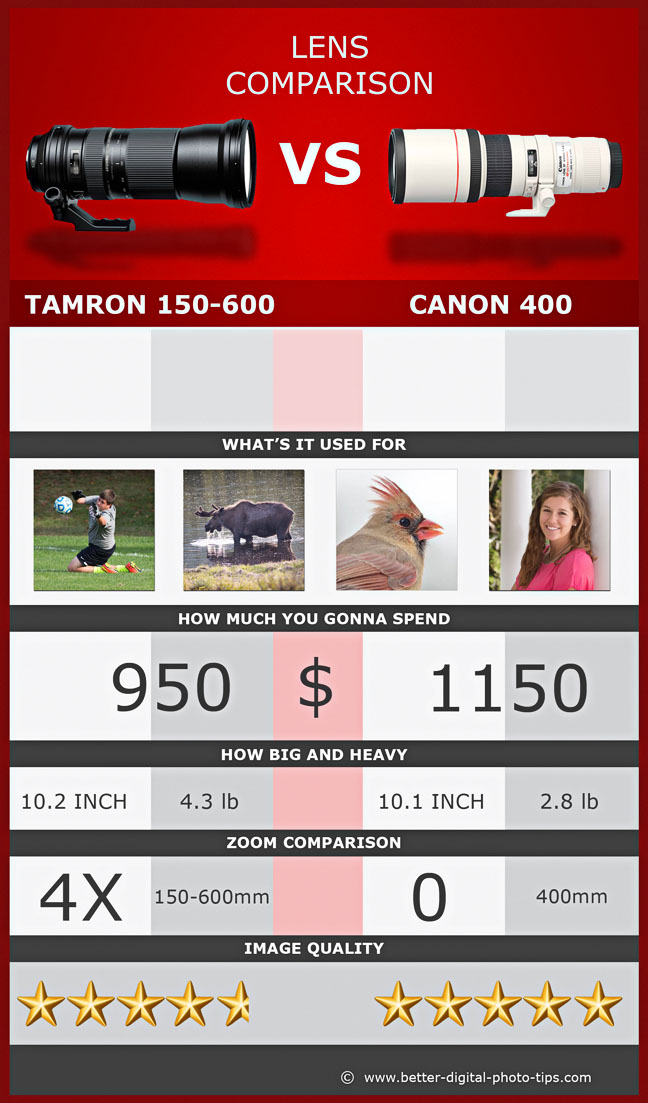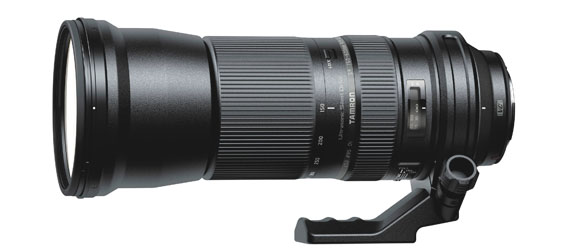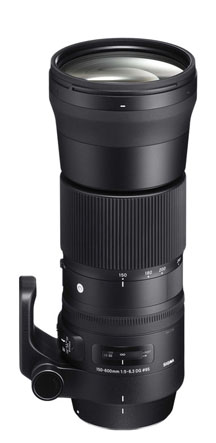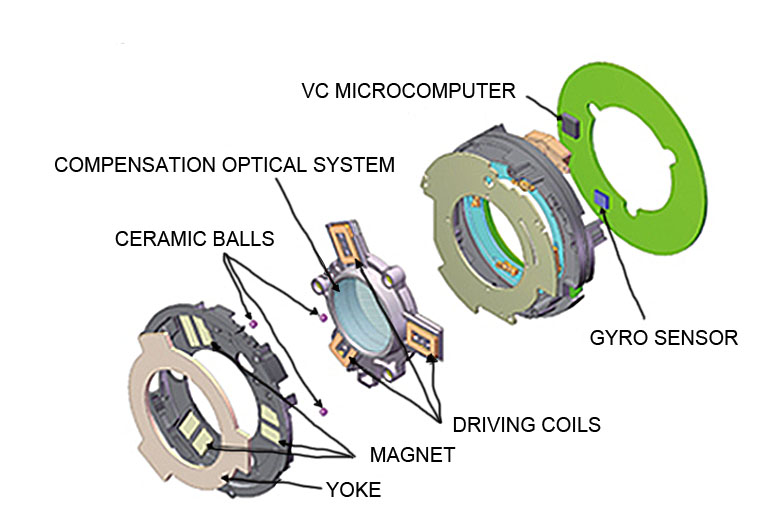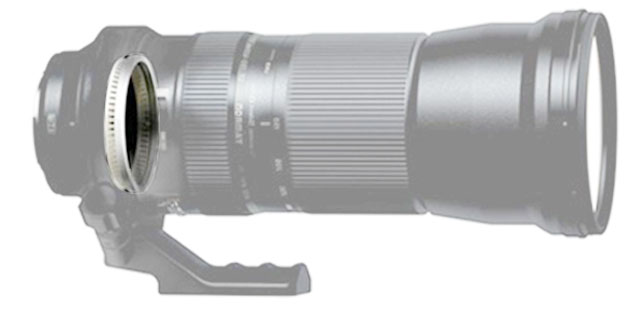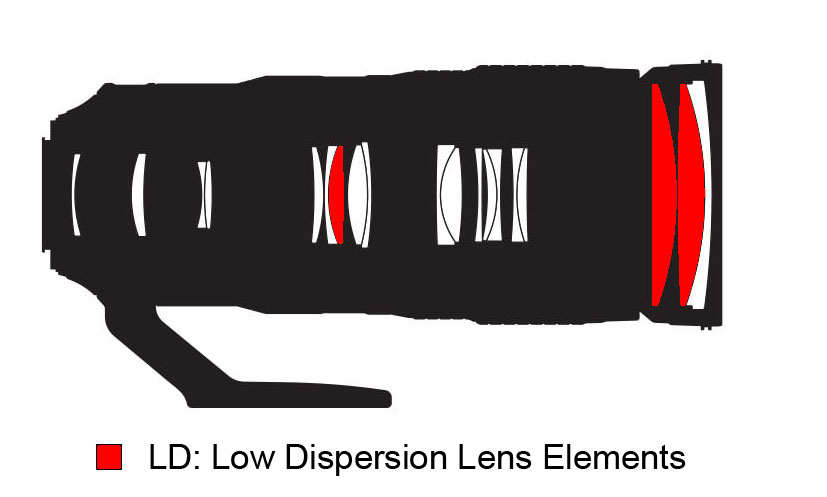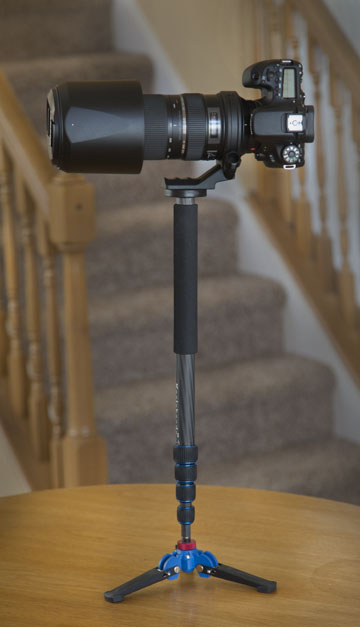HOW TO POSTS: LIGHTING AND COMPOSITION
Tamron 150-600mm Lens Review - Is It any good For You?
Does the Tamron 150-600mm lens make sense for you? That's the question this article will help you answer.
I "upgraded" to the Tamron 150-600 after selling my Canon 400mm f/5.6 L lens. That might surprise you, particularly if you know that I am a Canon geek, but I wanted the extra reach and versatility that this lens has over a 400mm prime.
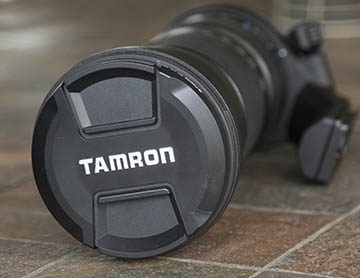 My Tamron 150-600mm Lens
My Tamron 150-600mm LensIs the original Tamron A011 worth the money? The quick answer is yes, if you want an affordable way to get yourself a good, versatile wildlife or sports lens. If you need a super fast, premium telephoto zoom lens, the quick answer is no.
Here are the pluses and minuses for the original model as well as the second generation Tamron 150-600mm G2 lens:
PRO
- Great magnification.
- Affordable for a bird/wildlife/sports lens.
- Solid 4x zoom range
- Available for Canon, Nikon, and Sony
CON
- Not "fast" at F/5.0-6.3 maximum aperture
- Heavy at 4.3 pounds
- Not as sharp as a prime lens
Quick jump to specific Tamron 150-600 topics in this post:
Here's a simplified side-by-side comparison of my Canon 400mm f/5.6 and the Tamron 140-600mm f/5.0-6.3.
These two super telephoto lenses are in the same price range, but I really wanted the versatility that a zoom lens gives you. What do you lose if you go with the Tamron over a prime non-zooming lens? Probably just a pinch of sharpness and contrast.
tamron 150-600mm specifications
You're probably wondering what the Tamron 150-600mm lens specs are.
- Focal Length 150mm-600mm
- Price: Less than $1000.
- USM Ultrasonic focusing motor and VC vibration compensation
- Lens zooming lock
- Maximum aperture f/5.0 at 150mm
- Maximum aperture f/6.3 at 600mm
- Minimum focus distance - 8' 10"
- Filter size - 95mm
- 9-blade aperture
- 20 Lens elements in 13 lens groups
- Weight - 4.2 lbs.
- Diameter - 4 1/8 Inches
- Length - 10 1/8 Inches
- Added length at 600mm - 3 1/2 Inches
The Tamron 150-600mm specs that matter most
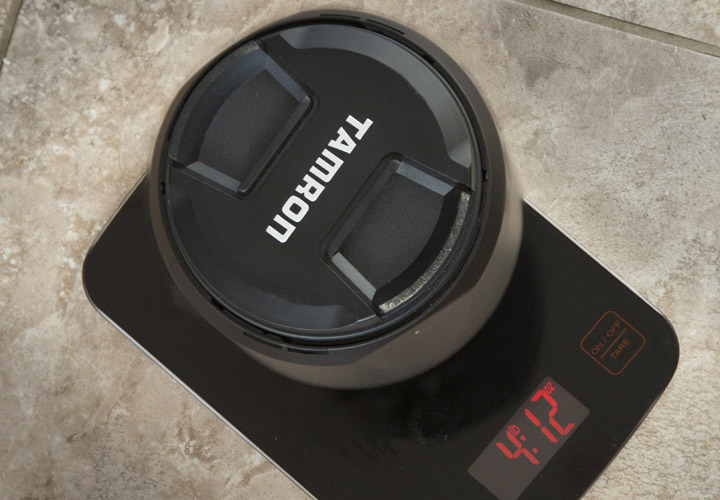 Weight: 4.12 Pounds
Weight: 4.12 PoundsAll lens specifications are important, but there are 3 specific specs that you should pay attention to more than any other when you're looking at this Tamron lens as a possible choice for your next purchase.
1. THE ZOOM RANGE
The zoom range is what grabs your attention first. The big camera makers like Nikon and Canon don't make lenses with the same 150-600mm (4x) range for full-sized sensor cameras. There are 70-200 lenses, 100-400s, 200-400s, and Nikon has the Nikkor 200-500.
The Tamron 150-600mm specs for zooming 4x from one end to the other make this a very appealing lens to wildlife and sports photographers. Surprisingly too, I've taken a few close-ups (from 9 feet away) and gotten great results.
Having the magnification you get at 600mm is surely the biggest appeal of this lens.
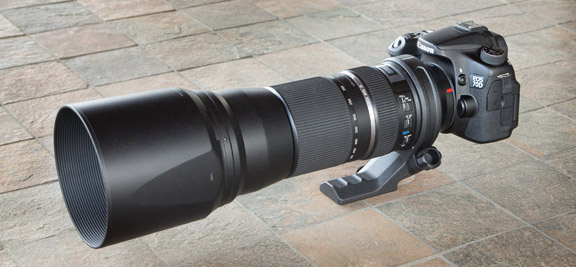 Tamron A011C-700 SP 150-600mm
Tamron A011C-700 SP 150-600mmF/5-6.3 Di VC USD Zoom Lens on Canon 70D
2. THE PRICE
The enticing appeal of getting a super telephoto lens (300mm and up) is quickly squelched when you see the price tags of lenses like the Canon 200-400mm f/4 with tele-extender for $11,000. or the Nikon 200-400mm f/4 for $7,000.
The Tamron and the Sigma both come in at less than $1,000.
3. SPECS RELATING TO THE SHARPNESS YOU CAN ACHIEVE
Lenses are worthless if you can't get a sharp image when using it. You can get 500-1000mm manual lenses for around $100 but using them and getting good image quality is challenging.
The specs relating to getting a sharp image include image stabilization (Tamron names it VC-vibration control), the type of focusing motor( USM-ultrasonic motors are fast and quite), and the type of lens elements included to improve clarity and reduce optical defects.
In lens test by several different independent lens testing labs, the Tamron 150-600mm lens specs, with regards to the technical tests, were very positive.
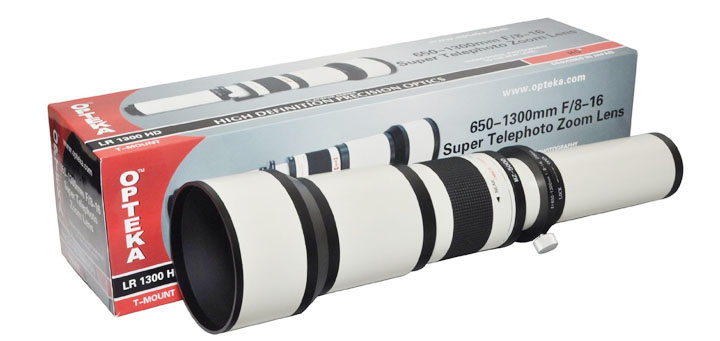 Bargain lenses are super powerful, hard to use, cheap to buy, and have marginal
Bargain lenses are super powerful, hard to use, cheap to buy, and have marginalimage quality.At the time of this post, this lens was selling on Amazon for less than $225.
I know bird lens and wildlife lens purists will tell you that you can't get the same sharpness with a zoom lens like this like you'll get with a prime lens. If you're like me, you're not a professional sports photographer or National Geographic wildlife photographer that earns a living with their photos.
You don't have the same budget for a super telephoto as a pro does and you don't have huge demands on what that lens can do.
You want a lens that gives you really sharp photos that look great. Perhaps you don't need to have the sharpest lens on the planet, you just want a real sharp lens.
That's called getting what you want without going overboard. You could spend $7,000-$12,000 to get a fast prime lens with the ultimate sharpness, but will that marginal increase in image quality be worth the extra thousands?
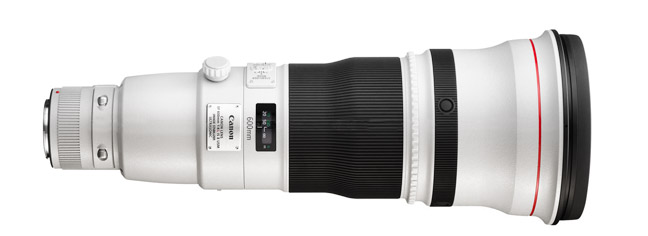 Canon 600mm f/4.0 "L" Prime Lens - Over $11,000
Canon 600mm f/4.0 "L" Prime Lens - Over $11,000Will others be able to look at your image and say this? "Oh yeah, you must have used a Tamron 150-600 lens." I'm not so sure. I like the idea of spending less than $1000 and getting an EXCELLENT lens with a 4x zoom ratio. Yes I know, the Tamron 150-600 isn't perfecct-neither is my spelling!
But what are the sacrifices you'd make by using a Tamron 150-600mm lens rather than a more expensive prime lens?
The Tamron A011 150-600mm f/5.0-6.3 Lens Test Results *
The lens passed my lightbulb test with flying colors. Photographing contrasty light sources like this incandescent bulb can be a good method to use to reveal lens defects.
 Light bulb lens test
Light bulb lens testI look at the following characteristics when evaluating camera lenses. Chromatic Aberration, Distortion, Sharpness, and Vignetting. The Tamron has all of these defects
Quick summary: these defects are not significant enough in this lens to be noticed by 98% of the viewing population, including the photographers who take them.
Here are the more detailed specifics on the lens deffects:
Sharpness
Sharpness is the most important lens characteristic you should pay attention to. If your image isn't sharp, everything else doesn't matter.
The sharpness test results for the Tamron 150-600 are impressive. Lenses this long usually have issues with sharpness, but the Tamron SP A011 performed admirably.
Like most lenses, you can improve on sharpness by closing down 2 stops from the maximum aperture. I try to do this as a rule to give me just a little boost in depth of field because it is so shallow with lenses that are this long.
Tamron 150-600 Chromatic Aberration
Chromatic aberration can be an issue in high contrast areas of photos. It's that fringing of colors, usually either cyan/red or green/magenta. Many cameras automatically remove these aberrations when jpgs are processed, or you can remove it when you process raw images in your software.
The chromatic aberration is very mild at the 150mm setting on this lens and a little more apparent at the 600mm setting, but it's till fairly minimal for a lens this long.
Distortion
The 150-600 lens has very mild pincushion distortion. This is different than many zoom lenses that typically have barrel distortion. The Tamron lens is also unique in the fact that the pincushion distortion is consistent across its entire zoom range.
If you're using this lens for birds, wildlife, sports, or portraits, you'd really have to look for it and even then I doubt you'll be able to detect it.
If you were photographing perfect grids or architecture with long straight lines you would have to apply a little correction with software.
Vignetting
This is the least important lens defect. Not only is it mild and evenly spaced with the Tamron 150-600mm lens, I consider it to be advantageous to have some mild darkening of the corners in photos. It naturally brings your attention into the important areas of the image.
Zoom Samples
I drove to a local park and focused on this pavilion that overlooks a soccer field. I was about 70 yards away and compared my Tamron at 4 different zoom settings.
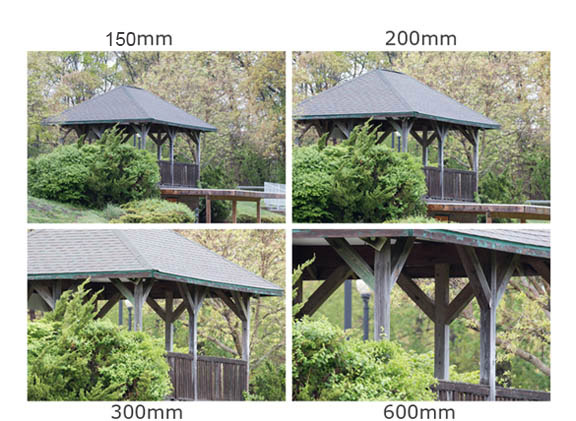 Tamron 150-600 set at 150mm, 200mm, 300mm, and 600mm.
Tamron 150-600 set at 150mm, 200mm, 300mm, and 600mm.Tamron 150-600 sample images
It was a cloudy day, but still a good day to visit the John Heinz National Wildlife Refuge in Tinicum, a little southwest of downtown Philadelphia. Long telephotos can be used for landscape photography too. Lenses, like the Tamron 150-600 will "flatten" a scene and bring out the textures of a scene if the lighting is right.
 Tamron lens set at 375mm, f/5.6 1/800 second ISO 3200
Tamron lens set at 375mm, f/5.6 1/800 second ISO 3200Plenty enough zoom power to capture close-ups of our fine feathered friends at a local park. Momma duck was keeping the entire team close-by.
 Dog portrait. Lens set at 600mm. Exposure was 1/640 second at f/6.3
Dog portrait. Lens set at 600mm. Exposure was 1/640 second at f/6.3Zooming the Tamron lens to 600mm raises the maximum aperture to f/6.3, but due to the extreme magnification, you still can achieve a pleasing out of focus background.
 Tamron 150-600mm Lens at f/6.3 for 1/640 Second, Handheld at ISO 4000
Tamron 150-600mm Lens at f/6.3 for 1/640 Second, Handheld at ISO 4000This lens definitely qualifies as a bird lens, a wildlife lens, and a sports photography lens. Particularly with APS-C sensor camera like the Canon t3, t4, t5, t6, 60D, 70D, 80D, 7D, 7D Mark II, and the Nikon DX cameras like the D7100, D7200, D5300, D3300, D500.
The angle of view is so narrow with the Tamron 150-600 on a crop sensor camera that you feel like you have enough power to photograph anything at any distance.
This brings your subject in remarkable close. If you are a newbie like me in this focal length range, you'll giggle with excitement when you first look through your viewfinder with this lens attached.
The truth About the Tamron 150-600mm zoom range
A 4x zoom range is pretty darn good for a lens this powerful, but is it accurate? As it turns out many lens manufacturers (Tamron included) are not diligent in constructing lenses to exact and convenient focal lengths.
That's actually a good thing. If lenses like the Tamron were described as a 147-580mm zoom it would make comparisons pretty challenging, right? As it turns out the tests have shown the Tamron to max out at about 570mm.
Prime lenses are usually quite close in being manufactured to be quite close to their claimed focal lengths. Super wide and long telephoto zooms tend to have a bit more leeway in measuring exactly to their descriptive focal lengths.
 Tamron 150-600mm Zoom Lens Markings
Tamron 150-600mm Zoom Lens MarkingsTamron 150-600mm Focal Length Comparison Video
I compared the difference in magnification of the Tamron lens with a standard 50mm lens in the following video. I used the 9 pre-set marks on the lens to set the magnification and shot photos of my fish pond from the deck on the back of my house.
Comparing the view of the Leinenkugel beer bottle shot with the 50mm vs the Tamron set at 600mm gives you an idea of how powerful this lens is.
SIGMA VS. TAMRON 150-600MM
The technical lens tests make it tough to choose on of these two lenses over the other. You really can't go wrong with either one of them.
I chose the Tamron because I'd already had a good experience with a wide-angle Tamron zoom lens and, more importantly, because of the experience of a fellow photographer with the Tamron 150-600.
Here is a great way to compare these lenses.
Compare the reviews of several different photographers.
More people have purchased the Tamron, but the Sigma has an overall higher consumer rating.
Tamron likely outsells Sigma because it's been marketed better, not because it's a better lens.
The Ubiquitous Tamron 150-600 Un-boxing - "What comes in the Box"
I've heard that some people like to see video of "what comes in the box" before they purchase something. I guess it's because they want to know EXACTLY what they're getting.
To that point I shot this video: The unboxing of the Tamron 150-600mm Lens. I sped it up so that you wouldn't get too bored.
Also included in the packaging was an "owners manual." What's not included when you buy this lens is a lens filter or a lens case to protect your lens. They might be the first lens accessories you should consider.
This is what the owner's manual looks like:
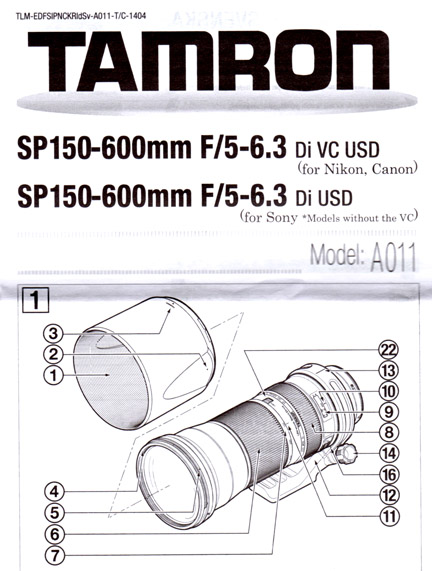 Tamron 150-600 Owner's Manual
Tamron 150-600 Owner's Manual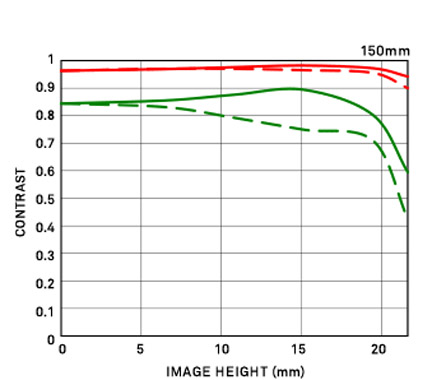 Lens Diffraction Chart
Lens Diffraction ChartBecause of my engineering background, I used to get obsessed with looking at the specific numbers and various comparison charts.
I'd look at exact comparisons of megapixels on a sensors.
I'd compare lenses by using the number of lens elements and lens groupings used in lens designs.
I'd check out lens diffraction charts and use the data in picking a favorite lens.
Then I got smarter.
I still check out the technical reviews.
But unless there is a glaring weakness revealed, I don't use the data alone to make a buying decision.
Now I read the summaries on the nerdy lens review sites and combine that with the actual consumer reviews of photographers who have purchased a specific lens, like the Tamron SP 150-600mm f/5-6.3 Di VC USD.
OTHER DESIRABLE FEATURES
- Proprietary eBAND Coating, works to suppress flare and ghosting for impressively clear, vibrant images. Tamron's eBAND Coating and BBAR (Broad-Band Anti-Reflection) Coating help suppress flare and ghosting for class-leading image quality.
- Compact and Stylish While covering a very wide range of focal lengths, this lens is remarkably compact and accepts 95mm filters. Its stylish design with signature Tamron tungsten silver finish and elegant brand ring incorporates a sturdy tripod mount to enhance both stability and ease of use.
- Moisture-resistant construction Moisture-resistant construction helps prevent moisture from penetrating the lens.
The Lens Collar - Lens Ring
Appropriately, the lens ring is strong and sturdy, which it should be for a lens this size. Lenses that are 200mm and longer in length should have tripod collars.
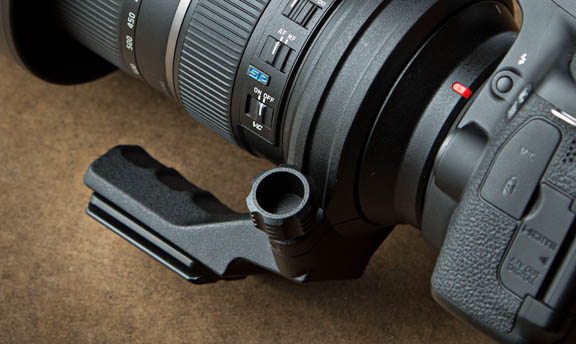 Tamron 150-600 Lens Ring Close-up
Tamron 150-600 Lens Ring Close-upThis is the largest lens collar foot I've ever handled personally and it actually doubles as a secure handle for this lens. This is a nice feature that I didn't expect and having a solid way to hold a heavy lens is appreciated.
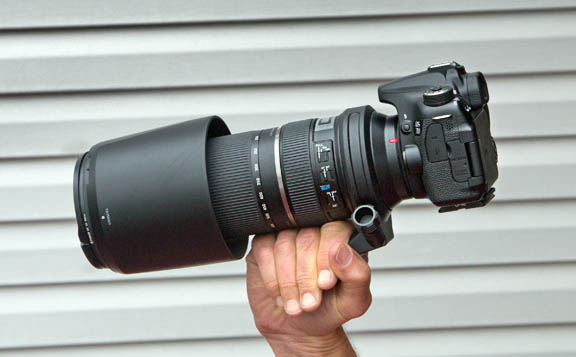
That's something I could not do as easily with my Canon 400mm f/5.6.
Tamron Focusing
The USD (Ultra Silent Drive) works quickly and quietly. It is a vari-focal zoom mean that if you zoom in or out the focus will change. This sounds bad, but in actuality the focus shift is very small and your lens will re-focus almost instantly as you press your shutter button down.
I tested to confirm the minimum focusing distance on the 150-600mm lens at full zoom of 600.
This photo of the beer bottle caps at 600mm was shot at just over 9 feet from the front of the camera. I focused on the "XX" and this image is the uncropped original.
I was surprised at how tight this shot was, almost a macro photo.
Image Stabilization on the Tamron 150-600
Tamron's proprietary image stabilization system is called VC, or Vibration Compensation. Tamron lens designers employed a 3 coil system to overcome amplified camera movement from its powerful zoom capabilities.
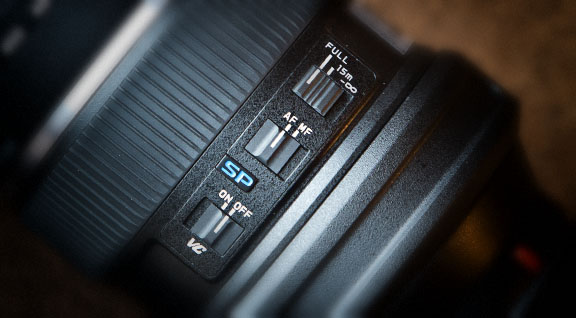 Vibration Control/Image Stabilization and Focus Switches on Tamron 150-600
Vibration Control/Image Stabilization and Focus Switches on Tamron 150-600Three coils activate the shake-compensating lens group, within the lens electronically, using 3 ceramic ball bearings. That compensating lens group is held in place by the ball bearings and gives smooth movement to counteract an movement during exposure.
This simplified mechanical structure helps keep the lens fairly compact and easier to use for us.
Tamron Lens Design
In my very early days of photography, I learned that the number of lens elements correlated with the quality of the lens. I don't know if that still holds true, but this lens definitely is sophisticated in it's design.
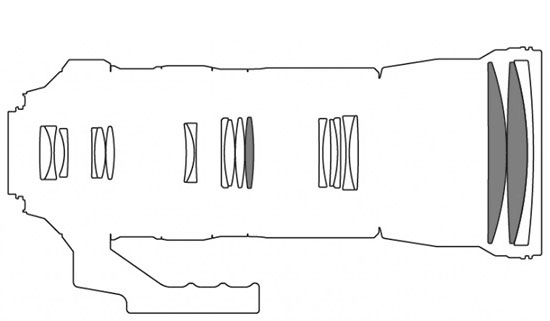 Tamron 150-600mm Lens Design Diagram
Tamron 150-600mm Lens Design DiagramThe Tamron 150-600mm f/5-6.3 Di VC USD lens has 20 lens elements organized into 13 groups.
* I don't do the technical camera and lens tests myself. I leave that for the experts. I read several different technical reviews and average them out for you.
Even though manufacturing processes are very consistent, every lens and camera will be very slightly different. Lens/camera combinations will be different too and that can skew your opinion if you read just one good or bad review.
I don't report the actual numbers from test results sites because there can be variations caused by exposure, choice of target, ISO, exposure, focusing accuracy and other factors.
I think it's more practical to combine the technical results from several sources with the opinions of other everyday photographers and read their opinions. That's what this site is all about.
Alternative Lenses to the Tamron
You do have a few other options if you're not quite sure you want to splurge on the the Tamron lens. Depending on the camera you have, you can choose a lens made by Canon or Nikon, or get the Sigma version of this lens.
Nikkor 200-500
If you shoot with Nikon camera, the Nikkor 200-500mm is a decent alternative. It has a slightly shorter zoom range and is a little steeper in price.
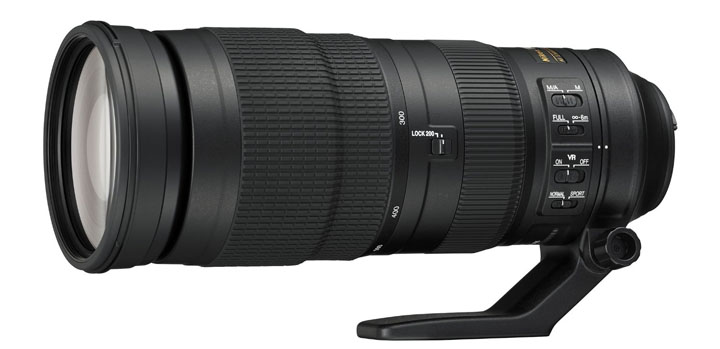 Nikkor 200-500mm. Alternative to the Tamron 150-600
Nikkor 200-500mm. Alternative to the Tamron 150-600(About $1,400)
Read the Reviews
You get the unbeatable quality of a Nikkor lens and the image quality that Nikonians swear by.
A whopping 96% of consumers give this lens a 4 or 5 star rating.
The zoom range is quite a bit shorter at only 2.25x versus the Tamron's 4x.
Sigma 150-600
You can get the Sigma 150-600mm shown below and its consumer ratings and the technical test results are almost exactly the same as the Tamron, so I can't recommend one lens over the other.
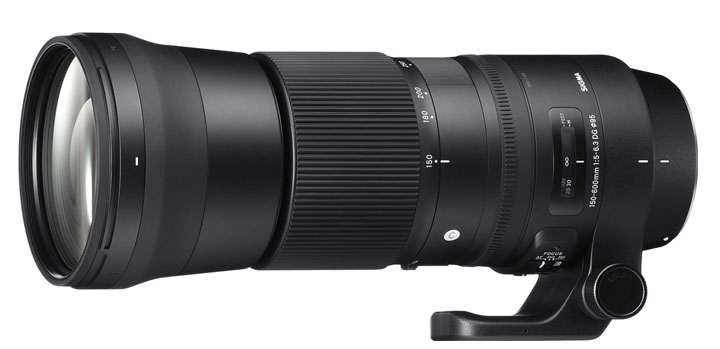 Sigma 150-600 Super Telephoto Zoom Lens
Sigma 150-600 Super Telephoto Zoom LensAbout $990
Just like the Tamron you can get the Sigma 150-600 Super Telephoto Zoom Lens for Nikon or Canon.
There is a Sport/Wildlife version of this lens and the "regular" version too.
I did not investigate this lens as thoroughly, but you can read the buyer reviews on Amazon.
Read the Reviews
I've skimmed over the lens tests on the Sigma 150-600 as an alternative to the Tamron 150-600 and I can't honestly say that the Tamron is a better lens. as I mentioned elsewhere, I am biased because of my talk with another nature photography enthusiast who really loved her Tamron version of this lens.
Canon 100-400 f/4-5.6
The newer version of the Canon 100-400 is the Canon EF 100-400mm f/4.5-5.6L IS II USM Lens. It was about 16 years (an eternity in the world of new releases) between the two Canon versions of this lens.
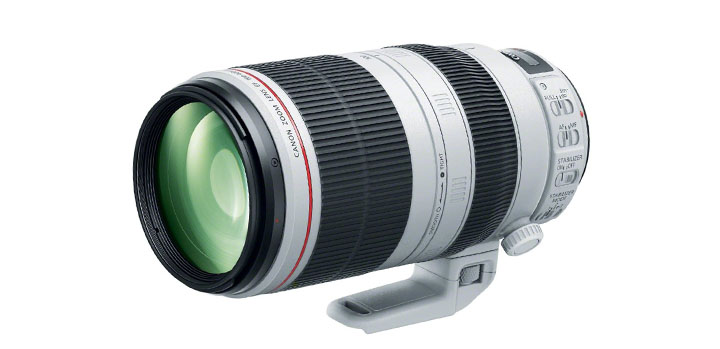 Canon EF 100-400mm f/4.5-5.6L IS II USM Lens
Canon EF 100-400mm f/4.5-5.6L IS II USM LensAbout $2,100.
Some skeptics might say this is more of a high end portrait lens rather than a true sports/wildlife lens. It doesn't have quite the same reach as the Tamron 150-600mm lens, but it definitely can serve as an excellent sports and wildlife lens. It may fall a little short if you want a true bird lens.
I found that using my Canon 400mm f/5.6 was strong enough for local wildlife and sports, but came up a bit short for serious bird photography.
With a maximum aperture of 4.5 at the short end you gain about 1/3 of an f/stop.
The cost of this lens is more than double the Tamron 150-600. The original Canon 100-400 is only around $1,400
Read the Reviews
Places to Get a Good deal
There are tons of places to get a good deal on your Tamron 150-600mm lens or an alternative that you like better. Compare the different online camera retailers and you'll find you can get a good price, great delivery options, including free shipping, and fair return policies.
But where you're comfortable, but as an Amazon affiliate, I highly recommend you read the reviews of both the original and G2 versions of the Tamron 150-600 lens, and the alternative lens choices on Amazon. I've listed your 4 best options when looking at lenses with similar focal lengths and quality.
As an Amazon affiliate I may receive a small commission from qualifying purchases, at NO added cost to you.
TAMRON 150-600MM LENS ACCESSORIES
No that you've got your prized lens, what Tamron 150-600mm lens accessories are worth considering? Let's start with the two that you really must have.
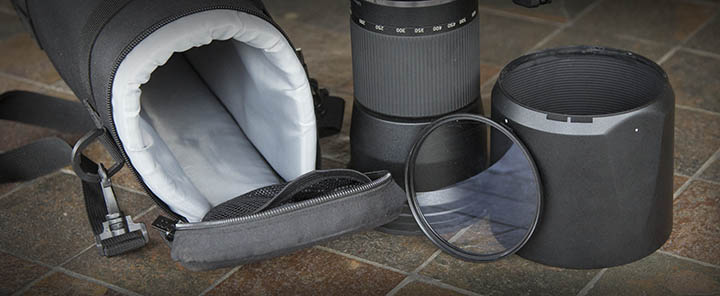 Tamron 150-600mm Lens Accessories
Tamron 150-600mm Lens AccessoriesESSENTIAL TAMRON 150-600MM LENS ACCESSORIES
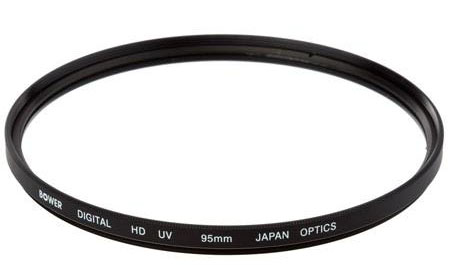 95mm Filter Size
95mm Filter SizeA clear filter and a lens case.
These are the accessories that you can't live without. You shelled out the money for your new prized possession, now what do you need to get right away to go along with your lens?
Protection. Both the front lens element and the overall lens need to be protected. Filters are very affordable and protect the single most likely spot on your lens that can be damaged, the front of the lens. If you somehow got your 150-600mm lens without one, you definitely should have a lens cap that fits perfectly.
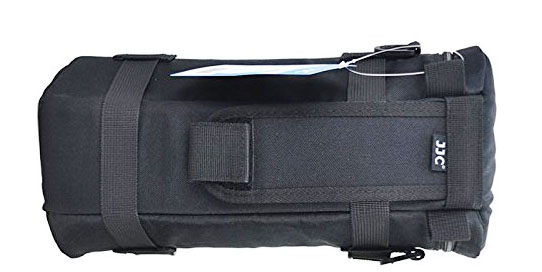 Large Lens Case Made By JJC
Large Lens Case Made By JJCYou need a medium to large camera backpack with a specific compartment to fit your Tamron 150-600, or you need a separate, well-padded case to protect your investment. I chose the JJC lens case shown above because of its reviews and its versatility in attaching by the waist or shoulder straps.
lens collar for your tamron lens
A lens collar is an essential accessory when you are mounting your 150-600 on a tripod or a monopod.
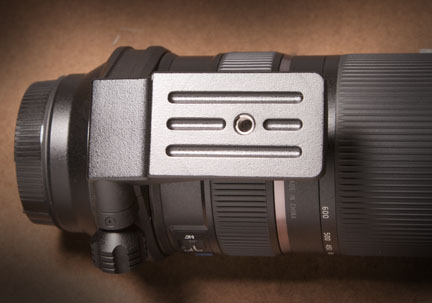 Lens Collar
Lens CollarThere is a version of the lens collar that has a longer base surface for attaching to your tripod. Tamron made the announcement in February of 2015 that they were offering the model A011TL as an upgrade to the standard lens collar.
Tamron claims that it ads stability and versatility. I claim that the standard lens collar, when screwed on tightly, gives you all the stability you'll ever need.
TELECONVERTERS (TELE-EXTENDERS)
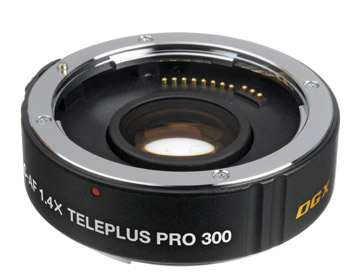 Tele-converters
Tele-convertersTeleconverters are an effective tool for getting extra zoom power out of a lens, but they do have some limitation. I don't recommend them as a good accessory for this particular lens.
They work better with prime (non-zooming) lenses, and more importantly, you'll likely have auto-focusing issues with many cameras when the lens's maximum aperture is greater than f/4.0.
other tamron 150-600mm lens accessories
Used along with a lens collar, tripods are the best way to make sure you get a sharp image with such a big, heavy lens with high magnification. Image stabilization helps, but it won't help you with arm fatigue like a three-legged accessory will.
If you want to travel lightly, but still need some help supporting your Tamron zoom, Monopods can help. Sports and wildlife photographers like them because they're easy to carry from location to location quickly.
The Tamron 150-600mm lens is a versatile super-telephoto lens. It's a good idea to know a few basics about digital camera lenses. You can get a better understanding about camera lenses and how to choose the best lens for your situation.
Tamron 150-600mm Review summary
If you held a gun to my head and said I had to give a two-word review of the Tamron 150-600 lens I'd tell you "Get one." or I could also say "Affordable Performance."
You found this article and now you're reading up on my opinion of the Tamron 150-600mm lens. I purchased one for several reasons.
- I got to talk to a photographer about hers during a wildlife photography workshop.
- I joined a Facebook page on the Tamron 150-600mm and learned a lot there.
- I read tons of reviews on Amazon.
- I read the technical lens reports on several geeky lens review sites.
I hope this article has helped you. If so, please share it. Keep shooting. Keep learning. Keep improving.


ABOUT BRUCE LOVELACE
Bruce is the publisher of this website. He is the author of the book "Improve Your Photography Instantly." Read more on Bruce on his Bio Page. He's been known as The Traveling Photographer ever since 1994. Read more about this website.
View some of Bruce's photos on Instagram. Visit the Facebook Page. Watch him on YouTube. Bruce runs photo workshops for kids and adults, and provides one-on-one photography coaching.
Digital Photography Education Location on Google My Business
